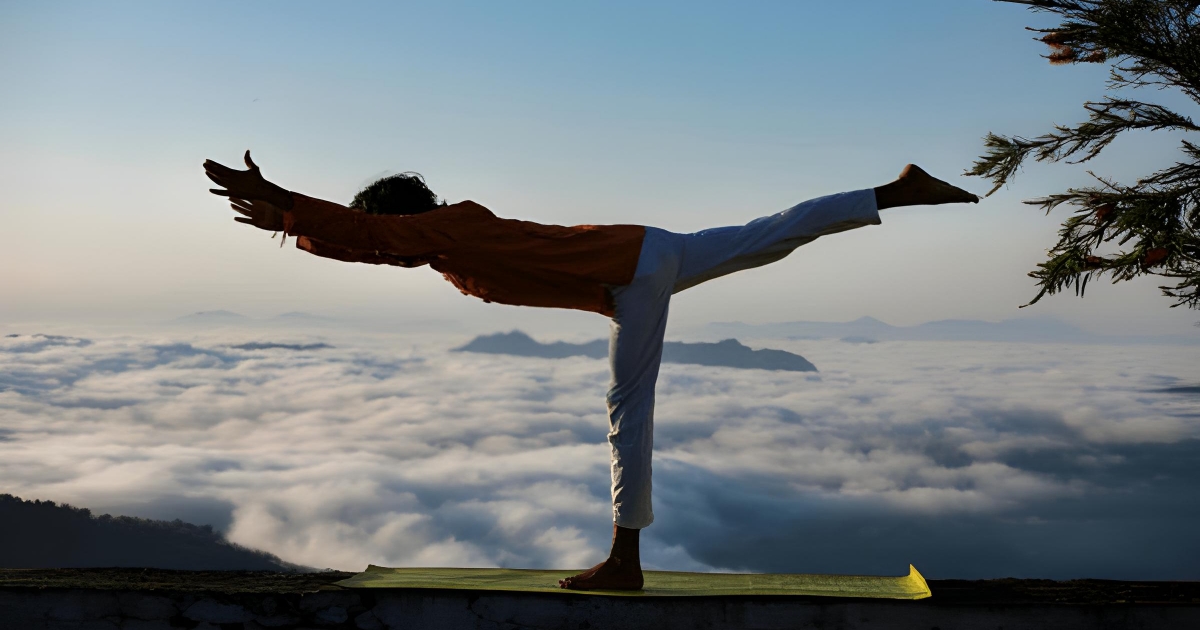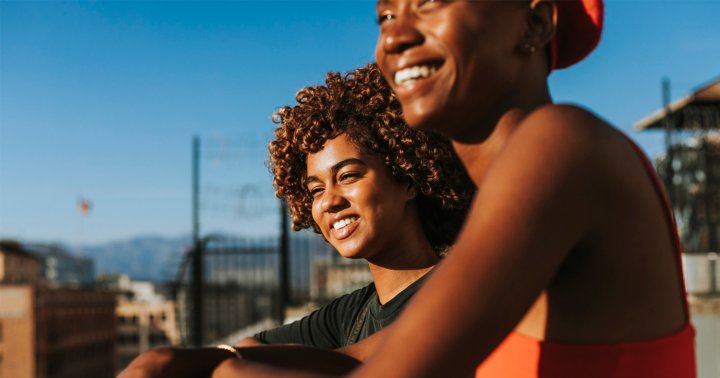Balance Yoga: My Top 8 Yoga Poses for Building Better Balance
The post Balance Yoga: My Top 8 Yoga Poses for Building Better Balance appeared first on The Yoga Nomads.

Key Takeaway
Balance yoga builds strength and body awareness through a variety of postures ranging from foundational asanas like Mountain and Chair poses to challenging single-leg balance poses like Warrior III and Dancer. Consistent practice of balancing poses, focusing on weight distribution and breath control, is key to mastering the art of balance yoga, with benefits that extend beyond the mat into daily life.
Of the many benefits yoga offers, building balance is a popular reason I hear that inspires beginners to attend their first yoga class.
Indeed, I’ve found balance yoga to be a cornerstone of my practice that extends far beyond my yoga mat. Balance is more than just standing on one foot; I see it as an exploration of body awareness and an exercise in mental focus, aiming to create a sense of equilibrium within myself.
If improving your balance is one of your yoga goals, use this article as inspiration. I’ll share several key balance yoga poses for beginners and experienced yogis.
Step onto your mat, take a deep breath, and embrace a new challenge with these balancing poses!
Master Mountain Pose for a Solid Foundation

The first step for any yogis interested in building balance is to create a stable foundation from the ground up. In yoga, standing poses are key for building a solid base. When I teach a balance-focused yoga class, you can bet the sequence will begin with Mountain Pose!
Ground and Align
When I guide my students through a balancing sequence of standing poses, I always bring them into Mountain Pose first. This posture gives them a chance to focus their attention and center themselves.
Here are some cues I use in Mountain Pose to help my students become aware of their alignment and muscular engagement:
Ground down through all four corners of the feet. Shift your weight from one foot to the other, then rest in your center with your weight evenly distributed between both feet. Press your navel in and scoop the low belly under to ensure core engagement. Lightly engage the quadriceps and hug the inner thighs toward your midline. Visualize your shoulders stacked over your hips and reach the crown of your head skyward to lengthen the spine. Keep your eyes focused straight ahead, establishing mental concentration.This position is your foundation for all other standing balance poses. Take time to refine your alignment and use proper muscular engagement, and you’ll be ready for the next balance challenge.
Enhance Focus with Tree Pose

Once you feel connected to your foundation, try testing your balance by standing on one leg. Tree Pose will help you practice weight distribution while strengthening your ankle and the stabilizing muscles in your standing leg.
Begin in Mountain Pose, then follow these steps:
Shift weight into your left foot. Lift your right leg. Bring the sole of your right foot inside your left leg while bending your knee. Avoid putting your foot on your knee joint by placing it against your calf or inner thigh. Experience the same alignment of the upper body as in Mountain Pose, with a long spine and an engaged core. Put your hands together in the attitude of prayer. Keep your breathing naturally while you focus your gaze on a still point in front of you. Feel your left leg firmly planted in the earth while you hold the tree posture for a few breaths. When ready, lower your right foot and return to Mountain Pose. Then switch sides and repeat Tree Pose, balancing on your right leg.Arm Variations
I always begin Tree Pose with my hands in a prayer position, as pressing my palms together connects the two sides of my body and helps me find my center. When I feel stable and solid, I prefer to reach my arms overhead, hands separated, and fingers spread wide. Other times, when I want to challenge myself, I’ll bring my palms together overhead and gaze up toward my hands.Changing up your arm position in familiar poses is a simple change that can completely alter your experience of an asana. Get curious and see what happens when you try something new!
Building Strength for Balance with Extended Table Top, Chair, and Figure Four Poses
A strong core and leg muscles are your secret weapons in achieving longer balancing times. Proper core strength is necessary to support your torso and maintain spinal alignment. Leg strength provides endurance and stability, allowing you to balance longer without wobbling.
Extended Table Top for Core Strength

As an asymmetrical pose, the Extended Table Top Pose is fantastic for balance training. Extending your opposite arm and leg challenges your core strength to maintain stability.
Try for yourself and see:
Starting from a tabletop position, place your hips over your knees and your hands under your shoulders. To activate your core muscles, press your navel inward towards your spine. Extend your left arm forward at shoulder height. Simultaneously lift and straighten your right leg behind you. Balance on your right hand and left knee for 3 to 5 breaths, then lower your arm and leg to the floor. Switch sides and repeat the extended table top, reaching your right arm and left leg.The bonus of this exercise is that it strengthens your spine and back muscles, which keep you upright while balancing in standing poses. Plus, it helps build body awareness and your sense of proprioception—essential skills for achieving better balance!
Develop Leg Endurance with Chair Pose

When you start practicing chair poses regularly, you’ll notice a big difference in your ability to hold balancing poses with greater ease. This power pose strengthens your legs and increases your endurance.
From Mountain Pose, bend your knees as if sitting back in an invisible chair. Take your weight back into your heels and maintain the natural curves of your spine. Reach your arms forward and up while keeping space between your shoulders and ears. Or, if your shoulders are tight, bring your hands together in a prayer position. Hold your chair pose for at least 5 breaths, feeling the power surge through your legs.Figure Four Variation

This chair poses a challenge and adds ankle strength and hip stability, contributing significantly to balance.
From the chair pose, shift weight into your left foot. Raise your right leg and place it across your left thigh. As you extend your right leg, your legs should form a “figure four.” Hold Figure Four Pose for 3 to 5 breaths, then release your right leg. Repeat on your other side, crossing your left ankle over your right thigh.The Figure Four Pose supports balance training by combining concentration, muscular engagement in the standing leg, and range of motion in the hip.
Balancing Poses to Challenge Yogis of All Levels
Take your balancing skills to the next level with these challenging asanas.
Warrior III

Warrior III engages your entire body; it demands a strong core, a focused mind, and steady breaths.
Begin standing in Mountain Pose with your hands together in a prayer position. Shift weight onto your left leg. As you bend forward from the waist, raise your right leg and extend it back. From your right heel to the top of your head, form a single, long line. Reach your arms forward. Hold Warrior III for a few breaths, then return to standing. Repeat Warrior III, balancing on your right leg with your left leg extended behind you.In this demanding posture, you’ll feel your standing leg working hard while the muscles in your back and extended leg stay active, too. It’s a full-body effort!
Side Plank

When your yoga teacher talks about core strength, we aren’t just referring to your abs. Your core includes all the muscles of your trunk and even your hip!
The side plank helps target specific areas like the deep core, obliques, and outer hip. These side muscles are key for lateral stability.
From the Plank Pose, shift weight into your right hand as you open your body to the left. Roll onto the outer edge of your right foot. Stack your left foot on top. Keep both legs straight as you lift your hips, forming a diagonal line with your body. Hold your side plank for 3 to 5 breaths, then return to your regular plank. Then, switch sides and practice the side plank with your left arm supporting your weight.Dancer Pose

To me, the dancer pose is the ultimate test of balance yoga. It requires equal parts strength and flexibility.
Begin standing in Mountain Pose. Shift weight into your left foot. Bend your right knee, bringing your right foot towards your glutes. Reach your right arm back to grasp your right foot. Engage your glutes and hamstrings to lift your right leg higher. Lift your left arm in front of you as a counterbalance. Bend forward slightly while keeping your chest lifted. Hold Dancer Pose for 3 to 5 breaths, then release your right foot and return to Mountain Pose. Repeat the dancer posture by switching sides and standing on your right leg while holding your left foot with your left hand.Even though I still find it difficult on some days, this stance constantly serves as a reminder of how much control, when focused, I have over my body.
Despite the physical difficulty of these balancing positions, there’s no reason novices can’t attempt them. If you need more guidance, you can find detailed step-by-step instructions and ways to modify these asanas in our library of pose tutorials.
Tips for Progressing in Balance Yoga Practice
Developing better balance requires focus, effort, and time, like any fitness goal. Here are some of my tips to help you throughout the process.
Set Goals
To progress in your balancing, start by setting realistic goals. Focus on small steps that build your skills over time. For example, beginners should start with simple standing poses like Tree rather than the more complicated Dancer Pose.
Aim to hold your balancing poses a bit longer each week. I prefer to count my breaths, as it gives me a clear point of reference to track my progress.
Use Props
Props are great aids for challenging poses. Beginners can practice next to a wall or use a chair for extra support as they build up strength and confidence.
Importance of Breath
Breath flow is crucial in balance yoga practice. However, at times, I’ve noticed that students hold their breath while trying to balance. Instead, keep your breaths flowing evenly to maintain focus and steady yourself.
Stay Curious
Remember that balancing is a process—your body is working from moment to moment, making micro-adjustments to maintain stability. It’s normal to fall out of a pose from time to time. Even as a yoga teacher, I have plenty of wobbly days!
Try to approach balance challenges with curiosity rather than frustration. Tap into your sense of body awareness to analyze what adjustments you can make.
Balance Beyond the Yoga Mat
One big lesson being a yoga teacher has shown me is that much of what we practice within the four corners of our yoga mats prepares us for the twists and turns of daily life. Cultivating balance is more than just a physical skill; it has far-reaching benefits.
Body Awareness and Proprioception
The ability to perceive the position and movement of your body is called proprioception. This awareness becomes increasingly important as we age. Research shows that balance ability correlates to a higher quality of life and better cognitive functions like spatial recognition and memory.

Focus and Concentration
Balancing on one leg certainly requires a high level of concentration. I consider it a form of focused-attention mindfulness meditation as I set my eyes on one point, tune into my breath, and become acutely aware of my muscular engagement and alignment.
Practicing balancing poses regularly has honed my capacity for deep concentration. I can approach tasks with unwavering focus, becoming absorbed in my experience.
Emotional Resilience
Balance yoga teaches us more than just physical steadiness. As we hold a pose, our emotional resilience grows. We learn to breathe through it and regain our composure when we wobble.
There are still days I feel unsteady, which can bring up feelings of frustration. Balance yoga teaches us to take deep breaths, practice self-compassion, and try again when we fall out of a pose. This skill has helped me face life’s challenges with a sense of calm.
Embrace Balance Yoga to Face Life’s Challenges
Carrying the principles of balance yoga into everyday life is a commitment worth making. When faced with tough situations, remember how you find your center on your yoga mat.
Balancing requires constant adjustment, much like navigating life’s ups and downs. By practicing balance yoga, we train our bodies and minds to adapt quickly and with grace.
In conclusion, balance yoga is not just an exercise; it’s a metaphor for life. Focusing on physical balance enhances our mental fortitude and readiness for whatever comes our way. Let us all strive to keep this equilibrium as we step off the mat and into the world.
Are you ready to put your balance to the test? Search for a free online balance yoga class on Yogadownload.com.

Frequently Asked Questions
What are the unique benefits of balance yoga?
Balance yoga enhances core stability, mental focus, and overall coordination. It can also reduce stress and improve posture.
Which muscles should I work on strengthening to get better at balance?
Concentrate on balancing poses that fortify the ankle ligaments and leg muscles. Don’t forget about postures that build core strength, too! These areas are all vital to building balance and stability in your yoga practice.
What tips can help me progress in my balance yoga practice?
Practice consistently, be patient with yourself, keep your breath flowing, and gradually increase pose difficulty and time balancing.
Does practicing balance yoga have benefits outside of physical health?
Indeed, it does! Beyond physical health, it promotes a balanced approach to life’s challenges through increased mindfulness.
Thanks for your feedback!

 BigThink
BigThink 
































